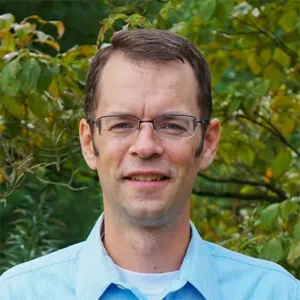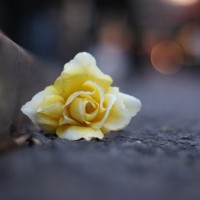The following talk was given at a symposium titled “‘Beauty will Save the World’ – It’s the Culture,” arranged by Andy Anuzis and The Civil Society Initiative.
I want to reflect today on the title chosen for this gathering, “Beauty will Save the World.” That’s quite the assertion, and I don’t know if I can convincingly support it, but I’ll give it a shot. My tentative thesis today is that the best way to cultivate healthy local cultures is to celebrate their beauty. It’s not to pass laws, it’s not to develop rational or economic arguments for their benefits, it’s not to start some new program. All these might be needed subsequently, but if we don’t first bear witness to the beauty of a healthy culture, then other approaches are doomed. It’s in this way, by enabling us to see the truth and goodness of healthy way of life, that beauty will save the world. So I want to think with you about the beauty of local culture, why that beauty is important, and how to cultivate it. I’ll begin by describing a beautiful, and I think saving, activity that I’ve had the privilege of participating in this past year.
A group of us at Spring Arbor University got together last winter and started discussing how we might start a small community garden. By springtime, we had secured the requisite institutional backing and organized several workdays where faculty, students, staff, and even one local high school student (he needed community service credit) came to help build the garden. We constructed ten raised beds near one of the student dorms, filled them with topsoil and manure, planted them, and set up a watering rotation. Later this summer, a local non-profit donated a greenhouse to us that they couldn’t use, and we’re looking forward to filling that with vegetables this fall and spring.
So far our garden hasn’t produced much that could be tabulated on a balance sheet. The dining hall baked some squash this summer and served it to a members of a visiting volleyball camp, but most of the produce has been given to volunteers who gather weekly at lunchtime to walk through our beds, talk about gardening, and just visit. We’re looking to find more ways to include students this fall, but there’s no way that we can feed the campus from our ten small beds. That would take a miracle on the order of the five loaves and two fish.
Rather, our hope is that the students and staff and faculty who participate will see and experience how beautiful it can be to grow and eat our own food. This rich, practical connection with our food is what Wendell Berry calls the pleasures of eating. These pleasures are complex, and they are nearly impossible to quantify, but if you’ve ever eaten a sandwich with tomato slices still warm from your garden, you know something of these pleasures. When you plant a seed, water it, weed around the delicate seedling, try to protect it from deer and bugs, watch it blossom and set fruit, and wait for that fruit to ripen, the act of eating the fruit is not merely an input of calories and nutrients. Rather, eating is just one part, perhaps the climax, in a whole narrative that we’ve embodied and lived out, a narrative that connects us to our fellow gardeners and to the place in which we live.
If I say that the form of such a narrative is beautiful, and that the pleasures of eating that tomato are the fruit of this beauty, what exactly do I mean? What is beauty?
The Catholic theologian Hans Urs von Balthasar begins his massive theological work The Glory of the Lord with a consideration of this question. He draws on Thomas Aquinas and classical aesthetics in his description of beauty as form and splendor:
Those words which attempt to convey the beautiful gravitate, first of all, toward the mystery of form or of figure. Formosus (‘beautiful’) comes from forma (‘shape’) and speciosus (‘comely’) from species (‘likeness’). But this is to raise the question of the ‘great radiance from within’ which transforms species into speciosa: the question of splendor. We are confronted simultaneously with both the figure and that which shines forth from the figure, making it into a worthy, a love-worthy thing. (Seeing the Form 19-20)
To call something beautiful in this sense is to speak about its material shape or form, and also about the meaning or splendor that emerges from the form and makes it desirable. And as von Balthasar goes on to argue, when we see a vision of the beautiful, when we see the contours of its form, we are enraptured by its splendor, caught up in a desire to participate in the radiance that beauty grants us to see as love-worthy. So to call this narrative of our community garden beautiful means that the whole way of living that the garden enables us to glimpse, in which we work together and share the fruits of this work, is desirable and love-worthy.
Another way of saying all this is that beauty is about the appearance or the form of truth and goodness, which are the source of the splendor Balthasar talks about. Alexandr Solzhenitsyn, in his Nobel Lecture, connects these three transcendentals in his reflections on Dostoevsky’s phrase: “Beauty will save the world.” Solzhenitsyn remarks that in his youth he thought such a claim absurd, particularly in the context of Stalinist Russia, but that he came to realize beauty has a unique ability to enflame our desire for goodness and truth:
There is, however, a certain peculiarity in the essence of beauty, a peculiarity in the status of art: namely, the convincingness of a true work of art is completely irrefutable and it forces even an opposing heart to surrender. It is possible to compose an outwardly smooth and elegant political speech, a headstrong article, a social program, or a philosophical system on the basis of both a mistake and a lie. What is hidden, what distorted, will not immediately become obvious.
Then a contradictory speech, article, program, a differently constructed philosophy rallies in opposition – and all just as elegant and smooth, and once again it works. Which is why such things are both trusted and mistrusted.
In vain to reiterate what does not reach the heart.
But a work of art bears within itself its own verification: conceptions which are devised or stretched do not stand being portrayed in images, they all come crashing down, appear sickly and pale, convince no one. But those works of art which have scooped up the truth and presented it to us as a living force – they take hold of us, compel us, and nobody ever, not even in ages to come, will appear to refute them.
So perhaps that ancient trinity of Truth, Goodness and Beauty is not simply an empty, faded formula as we thought in the days of our self-confident, materialistic youth? If the tops of these three trees converge, as the scholars maintained, but the too blatant, too direct stems of Truth and Goodness are crushed, cut down, not allowed through – then perhaps the fantastic, unpredictable, unexpected stems of Beauty will push through and soar TO THAT VERY SAME PLACE, and in so doing will fulfill the work of all three?
In our day, when politics and large social programs are perhaps even more distrusted than when Solzhenitsyn spoke these words in 1970, there is a great weariness and a lack of hope regarding the possibility for beneficial change. This cynicism may cause us to believe that truth and goodness don’t exist; they have been so long manipulated and used as cloaks for selfish political power. But as Solzhenitsyn and Dostoevsky claim, beauty may be able to lead us to these obscured and abused transcendentals.
Solzhenitsyn remarks that ideas which are false appear “sickly and pale” when they are worked out in art. The link he makes here between ugliness and disease—and, alternatively, beauty and health—is telling. In fact save, the other key term in the phrase we’re reflecting on, is closely linked to health. We use a salve to heal a wound, and sane, which means whole or health, comes from the same Latin root that save does. Both beauty and health involve complex pattern and form, implying something like the Hebrew understanding of shalom, whereas ugliness and disease are the result of damaging simplifications.
And yet oversimplification leading to disease marks nearly every aspect of our fragmented, modern lives. Our corporate medical system does not aim for health, but rather isolates various parts of the body and treats particular abnormalities. Hence our medical establishment has been particularly unhelpful at offering preventive care and treating complex problems such as obesity. Our monoculture agriculture is merely another instance of our propensity to isolate and specialize, and I’m not sure that our biculture of corn and soybeans here in Michigan is much of an improvement. We still don’t have complex polycultures that include animals and a true variety of plants. Such simplification works itself all the way down to our lawns, which we spray with toxic chemicals just to have “beautiful” grass.
In their false simplification, such specialized visions and the ways of life toward which they lead inevitably contribute to disease. These narrowly-focused ways of life become insipid, losing the splendor of beauty, and yet they define much of our lives as we search for quick and easy solutions. Wendell Berry notes the irony in our culture’s stereotypical view of country life as “simple,” noting that in actuality, it is urban, specialized living that is simple:
When I am called, as to my astonishment I sometimes am, a devotee of “simplicity” (since I live supposedly as a “simple farmer”), I am obliged to reply that I gave up the simple life when I left New York City in 1964 and came here. In New York, I lived as a passive consumer, supplying nearly all my needs by purchase, whereas here I supply many of my needs from this place by my work (and pleasure) and am responsible besides for the care of the place. (The Way of Ignorance, “Imagination in Place” 47-48).
Life in a healthy local community is indeed complex, but if the complexity is healthy, its form will be beautiful, and the complexity will give pleasure.
My point, then, is that our culture’s tendency toward reductive specialization is intrinsically un-beautiful, that beauty arises only from complex, harmonious forms, that health is beautiful. Currently, our cultural aesthetic is, in Solzhenitsyn’s terms, sickly and pale: we too often confuse the pretty, the mere appearance, for true beauty, hence our acceptance of lush green lawns that cause water pollution. But perhaps beauty can save, or at least salve, our world by giving us a richer imagination of health and thus causing us to desire ways of life that, as von Balthasar might say, carry the splendor of truth and goodness.
Thus, when we say that our narrative of a community garden is beautiful, we mean that its complex, formal health participates in the splendor of truth and goodness. What we are in need of, then, are more examples of this kind of beautiful health. Such forms can guide our imaginations and show us how we might make our lives participate more fully in such true beauty.
How do we actually see such forms whose beauty might inspire us to find more healthy ways of living? I think there are at least two conditions for perceiving such visions of beauty. The first is that we see beauty on a local scale.
We have to be able to see the whole to perceive beauty (again, note the connection between beauty and health). Analysis of the beautiful, if it does not begin with a vision of the whole and keep this vision constantly in mind, quickly devolves into an abstract rummaging through dead parts. It becomes what von Balthasar calls “anatomy,” which “can be practiced only on a dead body, since it is opposed to the movement of life and seeks to pass from the whole to its parts and elements” (Seeing the Form 31). This is the way the “industrial mind,” a term that Berry derives from the Southern Agrarians, sees the world. Such a vision, precisely because it is too narrow and specialized, inevitably leads to disease and deformation. In his essay “Solving for Pattern,” Berry argues that solutions based on this sort of specialized vision always worsen the problem—he gives the example of addressing soil compaction by using bigger tractors, which only compact the soil further, leading to the need for even larger tractors (The Gift of Good Land 136). So while a bad solution “acts destructively upon the larger patterns in which it is contained,” “a good solution is good because it is in harmony with those larger patterns” (137). In order to see the beauty of these larger patterns, and thus perceive what modes of life would harmonize with these patterns, we need to be able to see the whole form. When we try to imagine a beautiful whole on a global or even national scale, the difficulty, if not impossibility, of this task makes the temptation to perform a quantitative analysis of isolated parts almost irresistible. And yet such a fragmented gaze can’t see the living, beautiful whole, which is precisely the form that can give us the vision of health and beauty our imagination needs.
The second condition for perceiving this vision of healing beauty is a personal experience or encounter. We don’t see the whole form of beauty when someone describes it abstractly. I can tell you about the Sistine Chapel and describe its scheme and what the various parts depict, but you won’t really see its beauty unless you stand in it yourself. The same holds true for a Bach fugue. This is so because of the complexity and richness of beauty; there is a qualitative difference between an experience of the beautiful and an abstract description of that experience.
Interestingly, Berry, who was born in 1934, feels that he was born just in time to experience a vibrant local culture before it was damaged by the post-war industrialization and the rise of agribusiness. As Berry writes, “If I had been born five years later I would have begun in a different world, and would no doubt have become a different man” (A Long-Legged House, “A Native Hill” 172). My own belief in the rich goodness of local community comes largely from the time I’ve spent in Stehekin, a small community of about 90 residents who are situated in a National Park in Washington State. Because of the mountainous country, there are no roads into this community, and its isolation, particularly in winter, fosters interdependence among the residents. During the year my family lived there, and the subsequent summers I worked there, I got to live in a multi-generational community bound together by oral traditions, shared work, and a shared concern for the sustenance of their place. Every morning the local bakery draws a group of men who drink coffee, eat pastries, and talk about the work that awaits them in the day ahead. Their conversation is punctuated by oblique references to stories they all know and by the habitual phrases of friends absent or dead. The community’s memory lives in such conversation. But it’s hard to quantify and analyze what makes this community a healthy one; merely listing its attributes does not convey the beauty of its form. We perceive its beauty as a whole, when we experience life in such a community.
Thus Solzhenitsyn is right to claim that political arguments won’t inspire us to seek the truth and goodness of such communities; rather, we need to see their whole pattern and be enraptured by the splendor of their beauty. Many of Berry’s fictional characters model such an attitude. One, Wheeler Catlett, trained to become a lawyer, but when he graduated and had the opportunity to take a good job in Chicago, he hesitated. As he weighed his decision, he realized he was choosing between two visions: “Do I want to spend my life looking out a window onto tarred roofs, or do I want to see good pastures, and the cattle coming to the spring in the evening to drink?” Wheeler chose to return home, and years later his son, thinking about his father’s long life in that place, realized himself “how firmly and how unendingly fascinated his father has been by that imagining of cattle on good grass. It was a vision, finally, given the terrain and nature of their place, of a community well founded and long lasting. Wheeler held himself answerable to that” (Remembering 176). His son, now choosing whether to return home himself, knows that this vision inspired and moved his father his whole life; the seemingly simple image of cattle on good pastures enraptured Wheeler. And his son realizes that this one image reveals in its form the health of the whole community required to maintain it. Thus as Wheeler practices law in his small town, he knows his practice is serving the good when its fruit includes cattle grazing on green pastures.
Wheeler’s participation in cultivating his vision of beauty indicates what our response should be once we perceive the beauty, or potential beauty, of our local communities. Once we have experienced beautiful patterns on a local scale, the question becomes what should our response be? As von Balthasar argues, seeing the beautiful enraptures us, it enflames our desire to participate somehow in the form that we now recognize as love-worthy. So we all need to practice creating beauty. It’s remarkable how counter-cultural this participation might be, since we now live in a society that thinks “beauty” is meant to be produced by professionals from big cities and consumed by the rest of us.
We may not all be gifted artists like Kathleen, but we can still all be involved in creating beauty. As Pope John Paul II wrote in his “Letter to Artists,” “Not all are called to be artists in the specific sense of the term. Yet, as Genesis has it, all men and women are entrusted with the task of crafting their own life: in a certain sense, they are to make of it a work of art, a masterpiece.” We all have an opportunity and a responsibility to participate in this task of culture, and our “sub-creation,” as Tolkien calls it, should be guided by the contours of the beauty we’ve perceived.
What forms might this participation take? I think for all of us, it involves sharing stories. We need stories about what healthy communities look like.
Rod Dreher, the author of Crunchy Cons, published a new book this year that narrates his relationship with his sister, Ruthie, who lived a much more local life than his peripatetic life as an aspiring journalist. In a recent blog post titled “More Theory? More Cowbell!” Dreher responds to a critique from a reviewer who wished that his new book, The Little Way of Ruthie Lemming, had provided a more rigorous, philosophical defense of local community. Dreher explains that while such theoretical work is needed, he thinks stories have a particular potency:
I don’t believe my sister had all the right answers, and I don’t believe I did either. Ruthie understood some things I didn’t, and more to the point, she lived them. The life she lived, and the fruits of that life in the people who loved her and served her, made the case for roots and stability in place to me more effectively than all the arguments I’d been reading. It didn’t change my mind; it changed my heart. That’s the power of story.
So don’t discount the power of sharing simple stories. A vibrant, healthy culture is sustained, in part, by sharing oral stories.
But beyond stories, we also each have our own vocations to contribute to the beauty of our communities. For some it may be to create art that helps guide our vision of the beautiful, but for many of us, it will be more mundane: Wheeler Catlett’s vocation is to practice law in such a way that cattle would continue grazing on the hillsides around his town. Such work takes fidelity, it takes an imagination able to perceive the outlines of health and then determine what work might cultivate this health, and it takes hope that our work can indeed foster the beauty of health.
I am afraid that what often keeps us from embracing the quotidian work of sustaining the “little platoons” of which we are a part is the sense that this local work can’t affect the national and international problems over which the news media continually obsesses. But while such local work may seem futile in our current political and economic environment, it may actually be the most consistent and effective way to cultivate health, given the farce that national politics has become. This is why Berry believes that our “Our environmental problems [as well as our other diseases that afflict our society] are not, at root, political; they are cultural” (What Are People For, “A Few Words in Favor of Edward Abbey” 37). Dreher echoes this sentiment in an essay on Wendell Berry in which he considers him to be “a latter-day Saint Benedict”: “I am convinced that conservatives have placed far too much stock in political action and far too little in the work of culture” (The Humane Vision of Wendell Berry 281). Dreher hopes that Berry has begun a sort of monastic cultural movement, where instead of pouring their energy into national politics or the culture wars, individuals work to form healthy, beautiful communities in their homes. These communities might then preserve and sustain culture, providing beacons of hope that stand in stark contrast to sick society around them.
I do want to qualify this politics/culture distinction. Politics is indeed part of culture and a shaper of culture, but my point is that it shouldn’t be the primary arena in which we try to affect cultural change. Rather, fostering healthy and beautiful cultures will inspire others to participate and cultivate the communities of which they are a part. Representative democracy too often relies on the slim majority forcing everyone else to do the majority’s will, whereas culture relies on beauty to foster a robust conversation about the common good, and then to persuade others that this common good, that health, is desirable.
This distinction provides, perhaps, the clearest insight into the unique power of beauty: whereas political power ultimately relies on force, beauty simply invites others to perceive the splendor within its form. Beauty is an invitation, a gift, and thus it is always vulnerable to rejection. This is its weakness, and this is why beauty is often overlooked as a salve for our contemporary problems. But its weakness is also its strength. In our cynical world, where people are jaded by political posturing over truth and strident demands that some particular way is the only right way to live, beauty simply puts itself on offer. And if its form reveals truth and goodness, then those who behold beauty may find it love-worthy. Once our affections are moved, right action and truthful speech will follow.
So can beauty really save the world? Not even the beauty of healthy, flourishing local cultures can bring ultimate healing. It is only the divine Word, from whom all earthly beauty derives, and who is the beautiful appearance of God, who can ultimately restore all Creation to its true splendor.
But as we fall in love with local incarnations of beauty, our imagination becomes saved, salved, healed to see how the truth might be enacted in our place. We gain renewed imaginations. Reading about Wendell Berry’s fictional Port William or sharing stories with others helps form us to desire that kind of beauty in our own places. The beauty of other healthy cultures leads me to ask how might Jackson, Michigan, where I live, be a community beautiful in its own unique, but analogous, way? That’s the question that guided us as we started our community garden; we didn’t set out to feed the campus or reduce our environmental footprint, but to consider how we might inspire the imaginations of our students with a rich vision of the beautiful. And this is the question that I hope guides our affections and our actions as we seek to cultivate healthy local cultures where we are.
Jeffrey Bilbro teaches English at Spring Arbor University in Spring Arbor, Michigan.







5 comments
Paul Hughes
This is absolutely correct. Beauty is the starting point. It stops us cold — rainbows and purple mountains and such — and gets us going — a beautiful woman or something to build, like a house or a country. Similar has been said in other contexts in T Dubay, The Evidential Power of Beauty, and DB Hart, The Beauty of the Infinite.
“If you want to build a ship, don’t drum up people to collect wood and don’t assign them tasks and work, but rather teach them to long for the endless immensity of the sea.” Antoine de Saint-Exupéry
David Nicholls
Beauty ain’t easy, I made a dovecote (pigeon-house) as a low space quasi-urban way of getting meat, and took great care to make it good looking, rats attacked the squab (baby pigeons) so I put up metal flashing (for a photo: http://davolls.blogspot.co.nz/ )
looks a little ugly/Frankenstein now, in future I cut the metal in attractive curve shapes . The ugliness was really the result of my ignorance/innocence of rats & pigeons, beauty is a slow learning process with a lot of listening to other species. I was also feeding the pigeons excessively, the waste (a sin I believe)
attracted those resourceful little critters from all around.
Kathleen Thorrez
After hearing Dr. Bilbro speak about the small contemplative yet productive gardens on the Spring Arbor Campus I recalled the email I received from another which was written by Steve Elliott from Grassfire Nation the day after the 2012 Election. He had reminded us of the words spoken by the prophet Jeremiah regarding the jews who were living in exile under the powerful King Nebuchadnezzar. Writing from Jerusalem, Jeremiah clearly states that God’s plan was Exile, but while there in that state, build houses and live in them, plant gardens and eat their produce, take wives, become the fathers of sons and daughters, take wives for your sons and give your daughters to husbands.
So in other words to build and create a beautiful culture from within these bonds, strengthen yourselves and family and to become the people we are intended to be. After hearing Dr. Bilbro which happened to be in an utopian setting , we can begin to see and feel the blessings that come with such a reflection.
Brian Koss
A thoughtful speech and interesting discussion in Manchester this weekend. We are very fortunate to have found Dr. Bilbro through a previous article he wrote on FPR. I think this event can be a building block for a building civil society in Michigan.
Comments are closed.